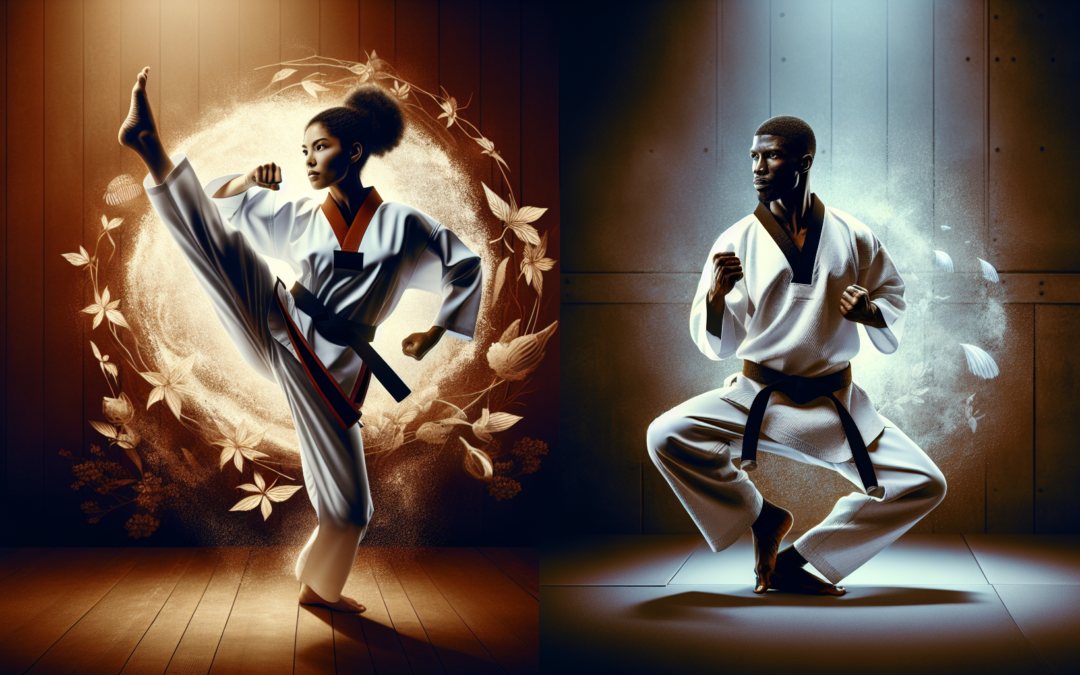Embarking on the journey of martial arts is more than a choice—it’s a call to discover your inner strength and discipline. As you stand at the crossroads of Taekwondo and Karate, understanding their differences can illuminate your path. With the graceful agility and high-flying kicks of Taekwondo contrasting the powerful stances and direct strikes of Karate, each art form offers a unique way to channel your warrior spirit. Dive into the nuances that define Taekwondo vs. Karate differences and find which martial art will guide your evolution, both on the mat and in life.
Understanding the Differences between Taekwondo and Karate
Cherry Hill, New Jersey is home to a vibrant community of martial arts enthusiasts. With the rise in popularity of martial arts, many find themselves drawn to both Taekwondo and Karate—two of the most prominent styles around the globe. If you’re considering joining the ranks of martial artists, it’s essential to understand the key differences between these two powerful disciplines beyond their shared foundations of respect, discipline, and personal development.
Origins and Philosophy
Taekwondo finds its roots in Korea, emerging in the years following the end of Japanese occupation during the mid-20th century. The style is renowned for its emphasis on high, fast, and spinning kicks, embodying a philosophy that extends beyond simple combat. In essence, it stresses the devastating beauty of fast leg techniques, often regarded as forms of ‘vertical freedom.’
Karate, on the other hand, originates from Okinawa, Japan. Its historical foundation lies in patience and power, merging direct hand strikes and grounded movements that mimic the unyielding nature of its practitioners. The philosophy embedded within Karate focuses on the perseverance of spirit and discipline, urging practitioners to find strength and resolve within their form while fostering a community based on unique cultural and ethical traditions.
Techniques and Training
The art of Taekwondo invites you to fly. From sparring to forms, or Poomsae, the training heavily focuses on agility and precision through kicks such as the famous spinning back kick or the ax kick. Classes are often high-energy, aiming to develop cardiovascular fitness alongside technique, engendering an exhilarating physical experience that often appeals to those craving motion.
Conversely, in Karate, the practitioner learns to root themselves to the ground. The style is lauded for its variety of stances such as Zenkutsu Dachi and Kokutsu Dachi, each seeking to optimize stability and power in strikes. Karateka, practitioners of Karate, cultivate the skill of “kime,” a concentrated focus and contraction applied at the moment of impact, whether executing a punch or blocking an attack.
Belt System and Progression
Both martial arts herald a belt system to denote rank and progression, serving as guides on a practitioner’s journey. In Taekwondo, the path to mastery leads through a range of colored belts culminating in the coveted black belt. Similarly, Karate practitioners strive toward the same symbol of achievement, yet the path highlights individual style variances distinct to the schooling system—a further testament to its adaptability.
Within both Taekwondo and Karate practices, belt systems are attended with grading examinations that assess skill, knowledge, and emotional maturity. Regardless of the discipline, the pride of slowly transitioning through ranks nurtures self-improvement at both junior and adult levels.
Culture and Cherished Community
The sense of camaraderie flourishes within each martial art; Cherry Hill dojos and dojangs thrive as community pillars. Training under skilled, deeply experienced martial artists provides exposure to a world where students bond over shared passion and endeavor. Classes are not merely learning opportunities; they’re communal gatherings, framed by traditions that deepen your connection to both the art and fellow martial artists.
At Taekwondo Academy’s Facebook page and Instagram account, countless students and instructors exhibit the dynamic nature of these martial arts, offering a glimpse of an enriched martial journey awaiting to invigorate new leads. By engaging with our community, you’ll connect with like-minded individuals striving for excellence in life through martial arts.
Fitness and Mental Benefits
Furthermore, the physical benefits derived from practicing Taekwondo or Karate are extensive. Both martial arts offer effective cardio workouts that enhance your overall fitness level, agility, and strength. Training routines built from a combination of punches, kicks, kata, or weapon forms—and in some cases, aerobic conditioning—often culminate in honed physiques and increased endurance.
Beyond muscular development, the mental benefits foster personal growth. Self-confidence is heightened through diligent training. As you break barriers both mental and physical, your psychology undergoes a positive shift, enhancing resilience and focus that translate into non-martial aspects of daily life.
A Personal Path
Ultimately, the decision between Taekwondo and Karate depends on your personal goals and which style resonates with your spirit. Perhaps Taekwondo’s creativity-inspiring kicks and forms excite you, or maybe Karate’s precision-oriented strikes align with your quest for discipline and decorum.
Regardless of your choice, both disciplines offer invaluable lessons in cultural appreciation, physical fitness, and mental fortitude. Whether you stand with agility or power at your feet, embarking on either martial avenue promises a journey full of discovery.
Conclusion
In Cherry Hill, the choice between Taekwondo and Karate shapes a transformative adventure. Free your spirit with Taekwondo’s agility or let Karate rooted discipline ground you. No matter which you choose, upon doing so, you solidify a commitment to explore martial artistry’s profound horizons, contributing to a lifestyle and community upheld with honor and unity.

